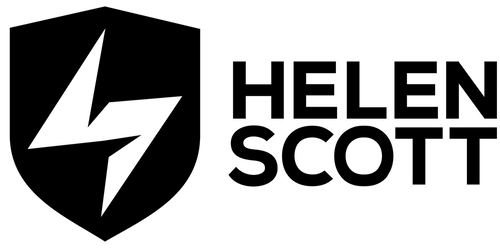The list of resources for ths talk is available here.
25 Content Creation and Sharing Hacks
The benefits of creating content are relatively well known, but it’s worth reiterating them before we go on.
-
Cements your knowledge. When you create content on something, it helps ensure you know the subject well.
-
Helps others to learn. Your content might help them with something that they’re unsure about, or it might validate their experience.
-
Participation in a community. When you contribute to a community, you meet people you can learn from and, in turn, can help other people. It also offers you excellent networking opportunities for your career.
What’s not to like?
Image by StartupStockPhotos from Pixabay
A Note About Self-Promotion
Self-promotion is not what content sharing is all about, in my view. In fact, if you google self-promotion you too will probably realise that you’re not keen on it either.
The good news is that you don’t have to be good at self-promotion; you just need to be good at content-promotion. It’s your content that you’re promoting, not you. You also need to be authentic. We are at our most authentic when we accept ourselves and our knowledge, including the gaps in it. When we’re comfortable in our own skins and not seeking approval, that’s when we create authentic content. When we do that, promoting our content feels much more comfortable.
The Hacks
I’ve grouped the hacks into five segments followed by a summary for this blog:
Always Do These
These are the hacks that you should always do when creating and promoting any sort of content. Allow me to explain why.
Don’t listen to the voices
The voices of self-doubt have one role in this life. They just want to keep you safe and protect you. You might think that sounds great, and thus you should listen to them, but if you do, along with being safe, you’ll also never try anything new or put yourself out there. Those two things could fail, sure, but you might even succeed. The voices are not willing to take that risk, but you can!
Believe in yourself
It is a little cliché, but if you don’t believe in yourself, no one else will. If you don’t create content that you believe in, and you are authentic with, the buy-in from others for that content will not be as strong. Some people struggle with this more than others, but if in doubt, remember that someone will definitely benefit from you creating content – you! I would put good money on the list being longer too.
Image by photosforyou from Pixabay
Enjoy yourself
As humans, we rarely do stuff we don’t want to do unless we’re being paid. Of course, that’s a broad statement because you’re probably thinking, “but, I wash up, I clean the house, and I go food shopping”, none of which are exciting in my book. However, those things are just the daily grind of life that you choose to do to change the surrounding environment, and so you don’t starve. Content creation will infringe on your leisure time, so you need to, at least to some extent, enjoy the majority of the process; otherwise, you just won’t do it, which would be a shame. Do what works for you; today, for me, it’s triple chocolate chip cookies. I have no regrets.
Getting Started
These are the hacks that are useful when you’re getting started creating or promoting any sort of content.
No one will read it watch it anyhow
Most people build their network and community as a result of creating content. Be that talks, blogs, videos, or some other form of content. You don’t normally have an extensive social media platform following when you first start creating content, so don’t stress about it; initially, it’s highly likely that no one will read it anyhow! It’s a safe time to get into the mechanical process of creating content and subsequently promoting (I will come on to that) that content. Just crank that handle and find your groove to start with!
Image by Ryan McGuire from Pixabay
Make yourself a platform
This can be a website, or at a minimum, standardise your social media handles where possible. When you create content, you will build a brand of some sort, even if it’s not your intent. People will come to associate you with the type of content that you create. If you have all of that content in one place, that will strengthen your brand and allow you to keep control of your stuff as well. Content will become scattered over time but don’t be afraid to have your own site (even though no one will read or watch it anyhow initially). If front-end web design is not your idea of fun, check out SquareSpace, Wix, or WordPress (there are more). You can also use canonical links to share your content on other platforms as well, such as Medium.
Find the medium that works for you
Fortunately, we’re all different:
-
Some people like reading
-
Some people like watching
-
Some people like listening
-
Some people like a combination of reading, watching and listening
My point is, create content that you’re passionate about and that you care about. It’s fine to exclusively create one type of content if that’s your skill-set.
Create ‘experience-based’ content
No one can argue with your experience. This also negates the argument of “someone’s already created that content”. No one has your experience or our viewpoint – if you don’t create it, no one else can! Experience-based content really helps to validate other people’s experience as well. Do you think it’s too basic or too easy? Nope, we’re not born good at something. We all have to learn it, and basic/easy content is a huge help on that journey.
Regularity beats size
It’s easy to create a huge amount of content for your first few pieces, and then content-creator’s block hits, life throws you a curveball, or you’re just out of enjoyment for the process. You do not need to come at this at full speed. Content creation needs to be well-paced and accepting of the limitations in your schedule (I’ll come on to that too). It’s much better to go a bit smaller and be able to release content on a regular cadence than release War and Peace every six months. It’s also much easier for your readers to consume that way. I think those social media algorithms prefer it too. Yes, I know I’ve bent the rules slightly with this epic blog!
Get yourself a community mentor
I wrote a blog on this which you can check out that has a lot more detail, but the high-level summary is that there are plenty of people in the community who have walked the same path as you and are willing to give you their time to help you on your journey. They are people who want to give you a seat at the table; it would be rude not to sit down.
Don’t overthink what content people want
It’s very easy when you’re creating content to think that you should create content “that the audience wants”. While yes, I can see that point of view, it is highly likely that thinking this way will:
-
Narrow your vision and creativity
-
Reduce your authenticity
-
Stop you from leaning on your own experience
By all means, consider the audience; you wouldn’t create a talk on Java and give it at a .Net conference (probably), but don’t throw away all the things that will make your content great when you’re considering them and their expectations.
Creating Personal Content
These are the hacks that are useful when you’re creating content outside any corporate brand. This might be blogs, videos, podcasts or more. There are lots of options to choose from!
Take (or even make) time to create content
Time is all we have, and it’s precious. Consider spending some of it on yourself instead of streaming services, where possible. I appreciate we are all very busy, and recent events may have compounded that, but if you don’t take the time, no one else will. Of course, there are big hitters in this department like dependants, job, and health to consider as well. Also, life will throw you curve balls (and they’ll hurt). However, keep trying to make the time if you can. The rewards are worth it.
Image by Alexandra ❤️A life without animals is not worth living❤️ from Pixabay
Information density is a Good Thing™️
When your audience consumes your information (reads your blog, watches your video, listens to your talk), they do so in different ways. Some will want exactly the information you’re providing and no more, some will have questions and want to go deeper, some will be really fired up and want to know everything about the topic! Because your audience is all different, the best thing you can do to support their learning is to provide information density if you have it. If you referenced other content when you created your materials, or if you can point your audience at more resources, please do so. You can do this with links, QR codes, lists at the end or whatever works for you and the content. This blog from Trisha Gee is a great example of information density!
Consider usability
If your content is not accessible, you exclude part of your audience. Make sure that your content is as accessible as possible, irrespective of the type of content. The World Wide Web group has created some helpful guidelines for written and video content in this regard.
Credit where credit’s due
If you use other people’s images (always with permission), please ensure you credit them appropriately. There are some sites such as Pixabay and Upsplash that have royalty-free images you can use. You don’t even need to credit the artist, but please do. It’s free to be nice, and without them, your content might just be a wall of text.
Try pairing on content
Many of you may have paired on code, but have you ever tried pairing on content? Even if the other person is a friend with some time to give you, get on a call and start a screen share; it’s all the rage these days! I wrote a blog on my experience of pairing on content creation, so I’ll let you dive in on your timescales.
Don’t let language skills hold you back
I get paranoid about this one. However, the truth of the matter is that slightly dodgy grammar, or a typo, is not going to block your content. I also want to mention accents; we all have them, and they’re all beautiful and part of us. If (to my ears) you have an accent, then I’m already in awe of you. Why? Because you speak at least one more language than I do, and you’re delivering content in your second/third/nth language, absolutely amazing. Embrace your awesomeness and skills and create content in whatever language you want to!
Leave reflection time
I benefit a lot from this. Once you’ve created your content as a first pass, take a break. Go for a walk, have a sleep, play with the kids, or tidy up. Just take a break. When you come back to it, you’re much more likely to spot any issues and even tweak it, so it’s even better. That said, don’t leave it so long that you accidentally forget to publish it.
Promoting Personal Content
You don’t need to be good at self-promotion; you need to learn to be comfortable with content-promotion. These hacks focus on getting the content out there. There is a lot of material out there on how to work with social media. It’s outside the scope of my knowledge and this blog, however.
Tell people you’re going to do it
This one sounds so obvious, but is frequently neglected because we labour under the illusion that it’s self-promotion, not content-promotion. This one is also especially pertinent to public speaking. If you’re going to give a talk, tell people you’re going to do it! I think many of us feel uncomfortable about this notion, but if you’re speaking about something that you have experience and authenticity in, why would you keep that knowledge to yourself when others might benefit from it? This means sharing your scheduled talks on whatever platforms you’ve selected as your vehicles for content promotion.
Don’t be afraid of feedback
Feedback can be scary, but there are a couple of things it’s worth remembering. For both of them, I am assuming that the feedback is not abusive. If it is, that’s why we have block buttons and code’s of conduct; please do not stand for it. Okay, so when you get feedback (irrespective of how you feel), the first thing to acknowledge is that they’ve consumed your content. That means that they’ve given you the gift of their time. The first thing you can do is say Thank you. That’s it, and it’s that simple. You don’t need to agree with their feedback, you can still grind your teeth, but they have consumed your content. The second point to remember is that you are in control. You can take the feedback on board, or you can disregard it; it’s completely up to you. You can fix that typo, slow down your talk, or use different lighting for your video. It’s up to you. Everyone has an opinion, and some people choose to share them. What you do with those opinions is your call and yours alone.
Use platforms consistently
When I say platforms, I mean things like Twitter, LinkedIn, Facebook, etc (no, I’m not going to link them in this instance). However, you choose to share and promote your content on these platforms is, of course, up to you, but just do so consistently. So if you like to use Twitter exclusively, great, do that. If you like to use Twitter and LinkedIn, great, do that. However, don’t switch around the place without good reason and without notifications. Switching platforms randomly can lose your audience who want to consume your content.
Creating Corporate Content
Perhaps you’ve been asked to create some content alongside your day job for the company that you work for. In that case, here are some hacks that can help you to navigate that, especially if it’s your first time.
Ask about corporate voice / brand
When you write personal content, you can use your own voice and brand, but when you create corporate content, it’s very likely that you’ll have to adhere to whatever the corporate voice and brand guidelines are that already exist. It’s best to know about these upfront. Writing in a style that is not your own is harder than you might think. Consider trying it before you commit to creating content that is not in your style.
Understand expectations (yours and theirs)
You need to find out things like timescales first and foremost. Bear in mind that whatever you do in this domain is in addition to your day job so understanding their expectations is key. You also need to ask yourself if you have the bandwidth for this, it might be in addition to your day job, but that certainly doesn’t mean it should be done out of hours! Set your own boundaries in this regard and communicate them.
Image by Michael Gaida from Pixabay
Learn about the review process
You’ll have stakeholders that want to review your content and indeed should, stakeholders that don’t want to review the content and should, and then stakeholders who want to review everything that they can, even if it’s not their job. I wrote a blog on this too, specifically from my Technical Writing experience. Identify who is in each group and work out how you’re going to work with them. What are their expectations of the content and review cycle? Do they want to review all the content at once or as bite-sized chunks?
Check the promotional strategy
Often in corporations, there are people who promote corporate content as part of their role. Find out if you have these people and understand who is going to be responsible for promoting the content you create. Are they expecting you to share the content you create from your personal social media as well? Are you comfortable with that? It’s best to understand the expectations in this area before you say yes.
History can tell you a lot
Unless you’re in a start-up, the chances are that you’re not the first person to write a post on the corporate blog or be a guest on their podcast. Ask your colleagues what their experience was like, such as expectations, the review cycle, stakeholders and more. Go ahead and extract as much information as you can so that you can make an informed decision.
Summary
So that was a bit of an epic blog! I hope there were some useful snippets of information in there. I hope that at least some of the hacks in here inspire you to go on and create some content on your experience and then share them with the community. Give it a go!
If you got this far, I’m thinking of turning this into a publication/book and adding more detail, examples and hacks. If this is something that you’d find useful, please do let me know or leave me a comment!








